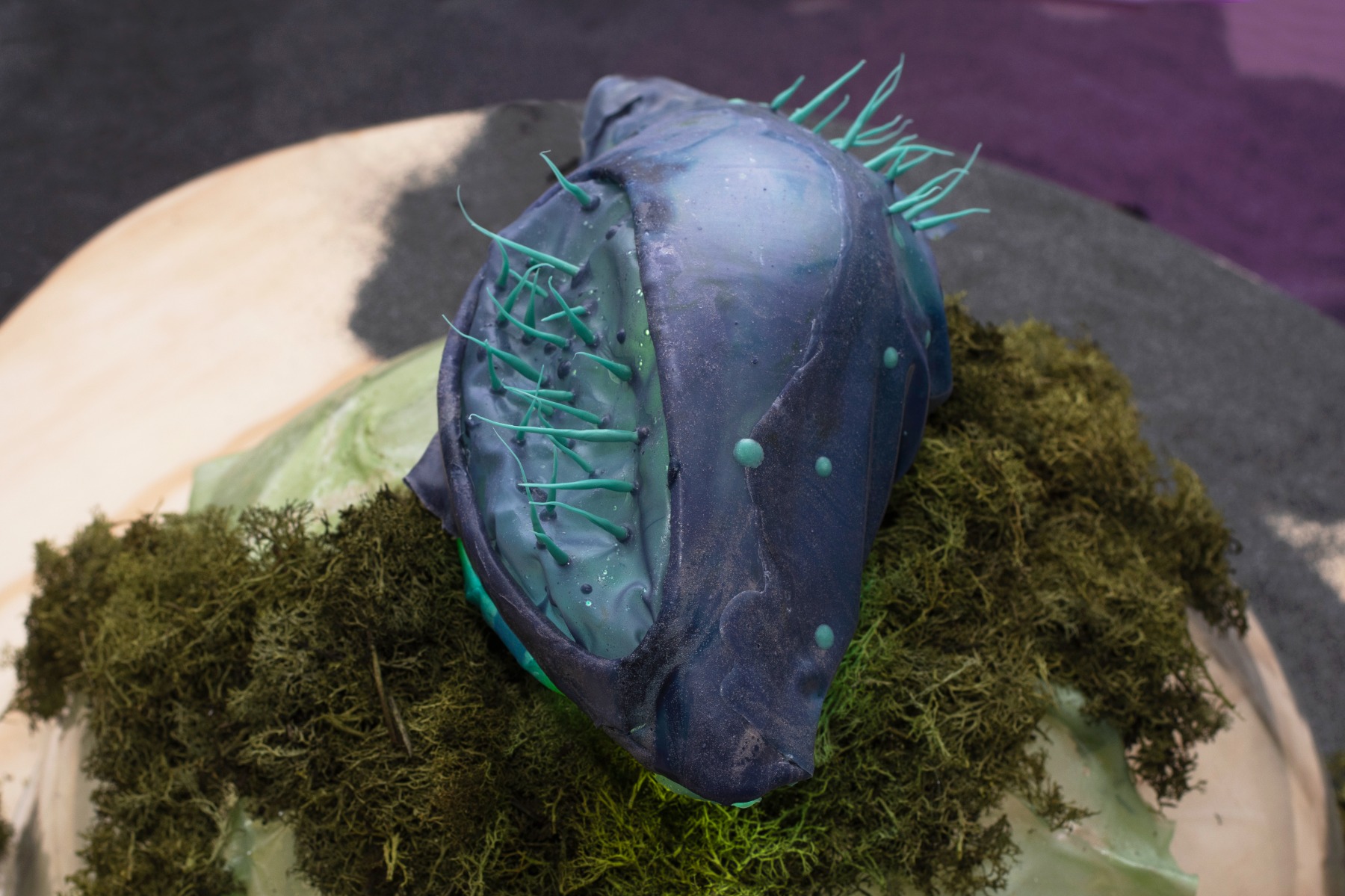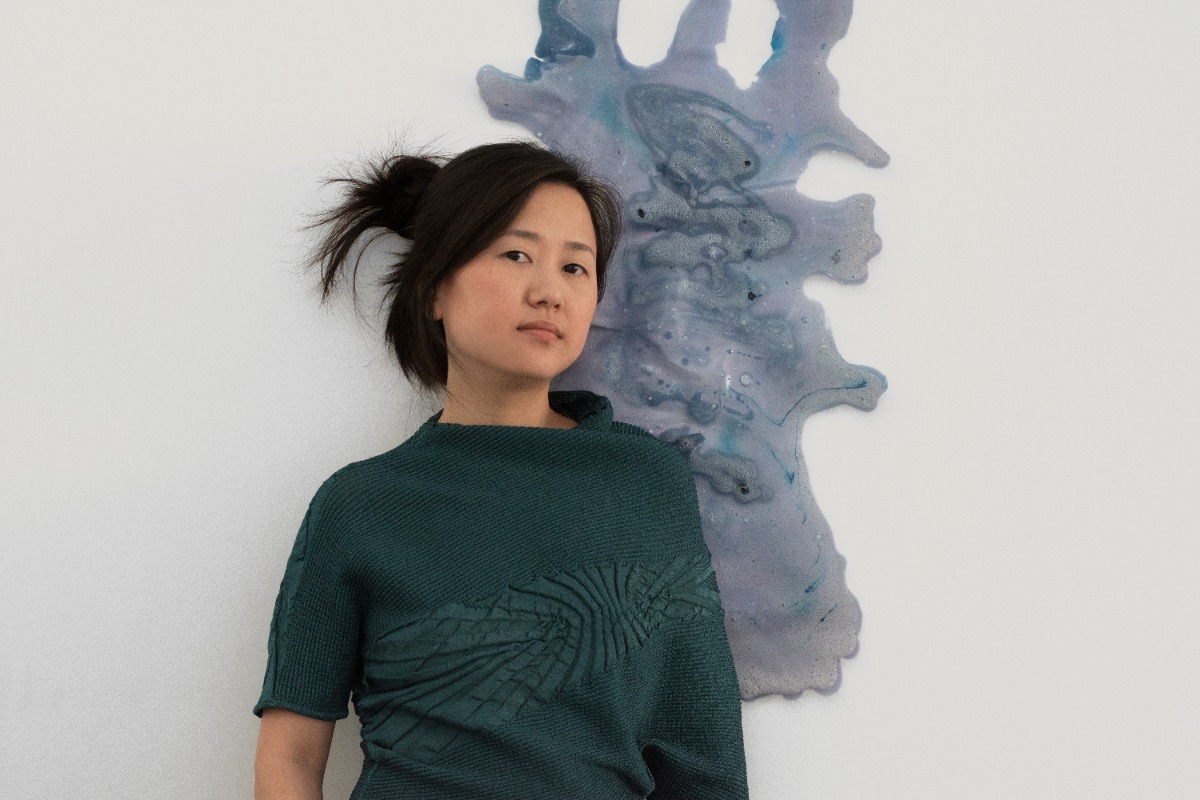
Admiring Other Forms of Life
Sofija Anna Kozlova
An interview with research-based visual artist Paula Nishijima
Paula Nishijima is a research-based visual artist working at the crossroads of art, science, and technology. Her artistic practice focuses on the relationship between individual and collective motivations exploring how new meanings, values, and ethics are (co-)created through participatory and collaborative processes extending to nonhuman lifeforms. Her work Plug-in Habitat, which is on view in the National Library of Latvia as part of the RIXC Art Science Festival’s exhibition Crypto, Art and Climate until 11 November, explores the adaptive strategies of plants imagining a change-oriented social system that functions on the basis of interconnections and interactions as opposed to centralised power relations. Despite the scientific and technological nature of her works, the message they convey is deeply philosophical, directing attention from human to nonhuman intelligence and the lessons we could learn from other lifeforms, both individually and collectively.
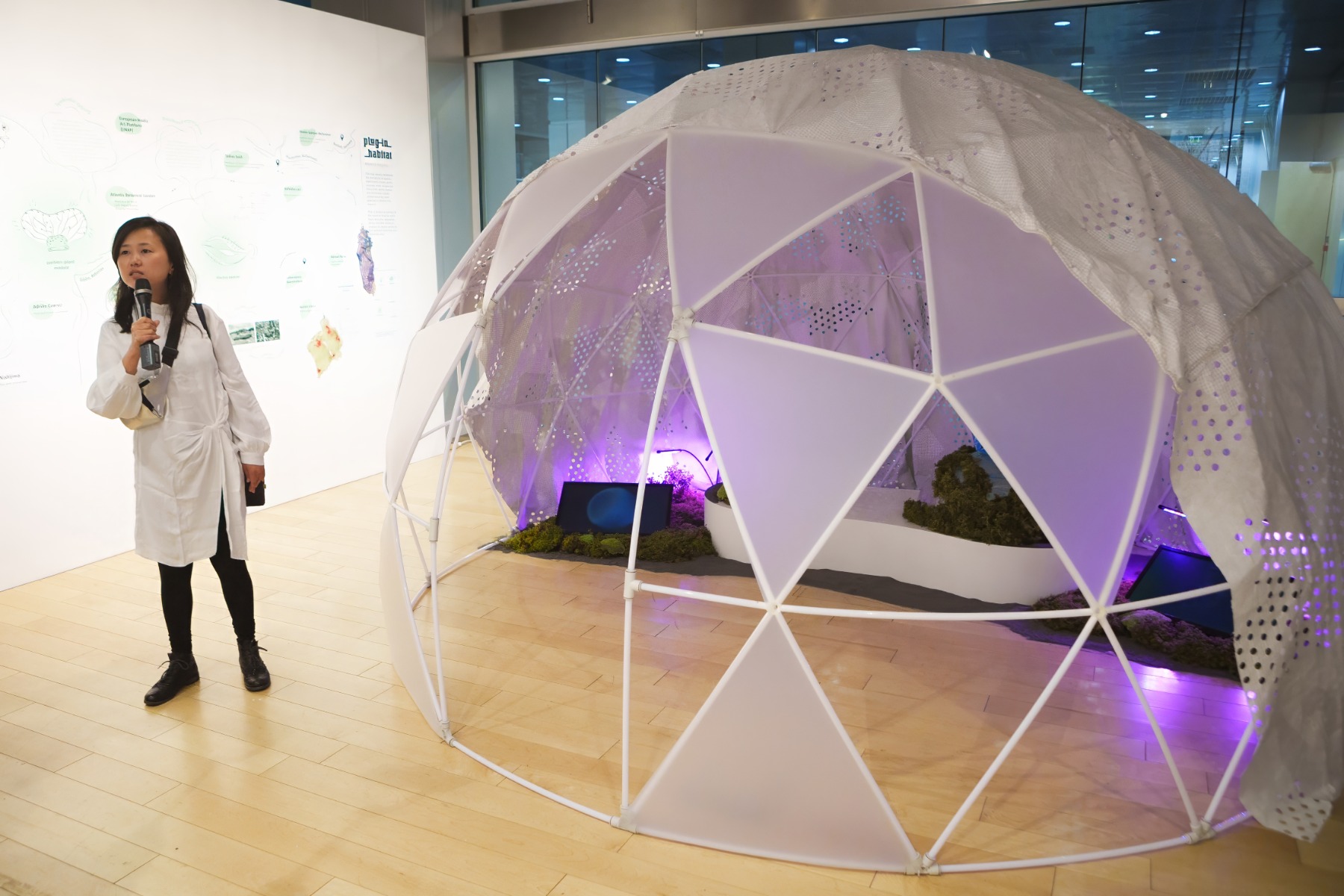
Your work often builds upon the similarities between plants and humans. In what sense can we speak of ‘plant intelligence’, and how do you understand the concept?
Plant intelligence, for me, is their capacity to overcome and solve the challenges they encounter in their environment in order to survive. It is also a sort of provocation to spark a reflection on what intelligence is – what we, as humans, understand by intelligence. If you look at plants, you don’t imagine that their colour, shape, texture, etc. (basically everything) is an embodied tool developed through many years of evolution for them to endure and adapt to their environment – cold, drought, animals that could eat them, the lack of (or an excess) of light. Everything in their body has a purpose. It’s an adaptation to their context. For me, adaptation is a keyword when we speak of the intelligence of plants. Plants are also very resilient in this sense – as they can’t move, they have to adapt to where they are. They are rooted, therefore much different from animals. If we feel like we’re in danger, we’re likely to run away. If water or food is scarce, we migrate to a different place. Plants cannot do this. For me, this temporality of plants and their evolution is very inspiring.
I am especially interested in the intelligence of decentralised systems. I have investigated the collective behaviour of ants, bees, slime molds, and even the neuronal network of a brain. They have no leader, nor any ‘central control’ radiating commands to the other parts. This would be what we often understand by intelligence: a brain that controls the whole system. In plants and other decentralised systems, intelligence emerges out of interactions. It’s about having processes that are not a one-way street. It’s not about one leader commanding the group but rather all the parts interacting, cooperating and generating an ‘intelligent’ effect.
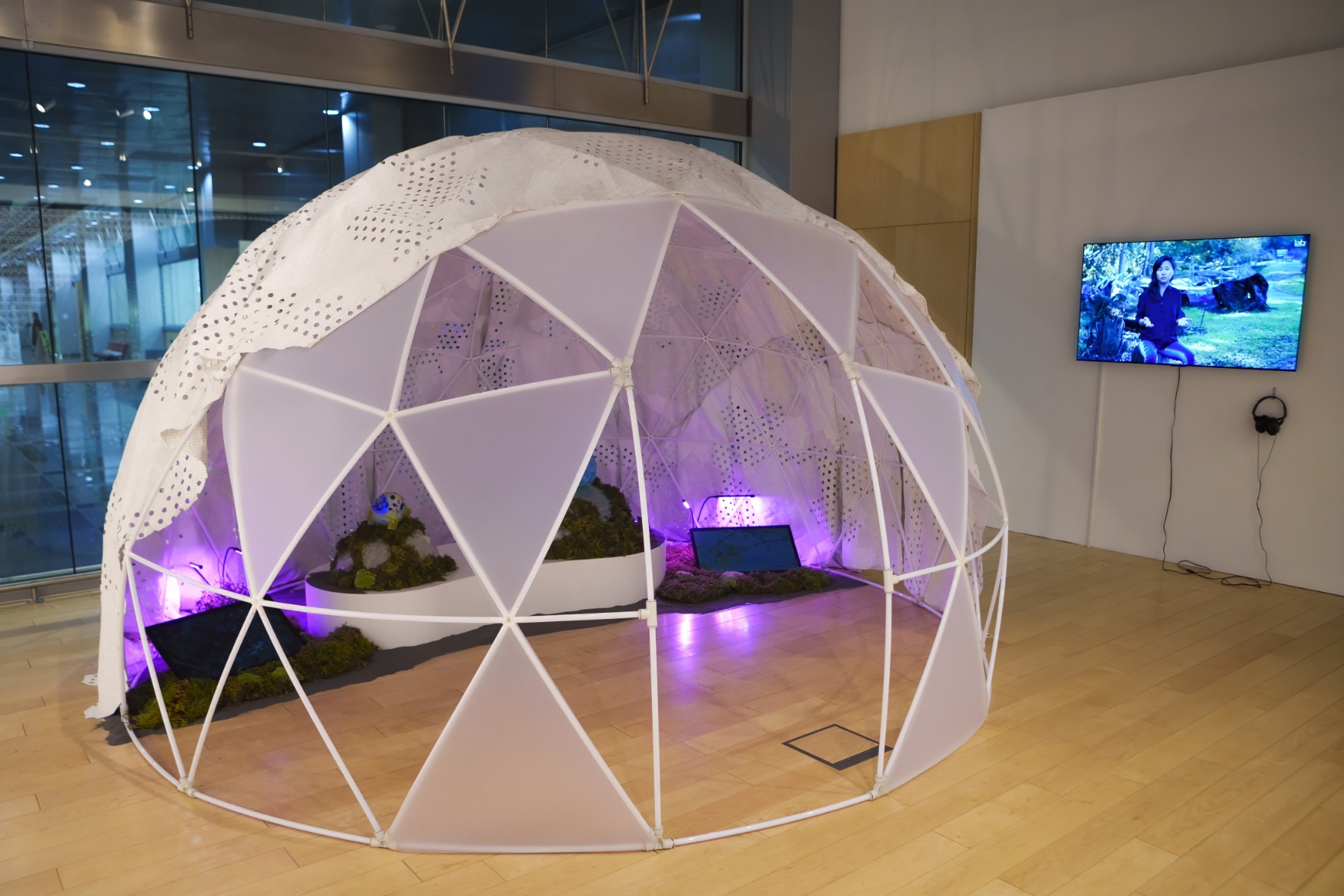
If this was generally understood and accepted, do you think it would change how we treat human intelligence as well? And if so, what do you imagine the outcome would be?
Yes, I think this is what I am trying to do with Plug-in Habitat as well – creating different parts that learn from each other and analyse how the other behaves in much the way plants do, for example. This work tries to embody scientific theory and artistic speculation. Of course, it is experimental, but it is an invitation for the public to imagine what it would be like if we had a system that is intelligent, not based on the human notion of intelligence, and also included plants in the collective process of learning.
I guess that concerns societal co-existence, but what about the individual? Do you think such a plant-orientated view of intelligence would change how we experience our own individual intelligence?
For humans, everything is about a way of thinking, which differs, of course, from culture to culture because the universe is perceived differently. It is not a world as we tend to understand it, but rather a sort of cosmos into which each individual places themselves. In relation to plants, I think it is a way of redirecting and reconstructing the notion of the individual (and the other) as humans understand it.
Humans tend to position themselves centre stage against the otherness of other species. It seems that the way we think is how it should be. We have the idea that we’re on top of everything and that we control everything, including plants. We cultivate, harvest, and consume plants, and we use other plants for medicine and to decorate our spaces. We share this common assumption that we control the plants, and so we forget to look at them and see how amazingly they adapt to changes in the environment, including what other types of intelligence this could inspire in us as well.
In a way, this also connects to my background. I am half Brazilian and half Japanese. The word and concept of master, for me as a Brazilian, carries historical weight. Certain traces of our colonial history still resonate and persist in the country’s present. The figure of a master in the history of enslaved people is very important to deconstruct. The master represents the model for an individual, something considered superior, and everything different from it is the other – which is then prone to being exploited, for instance. So the notion of territory and sovereignty, as well as the duality of the empire and the colony, is based on the assumption that one has the right to control others, including other humans and other species.
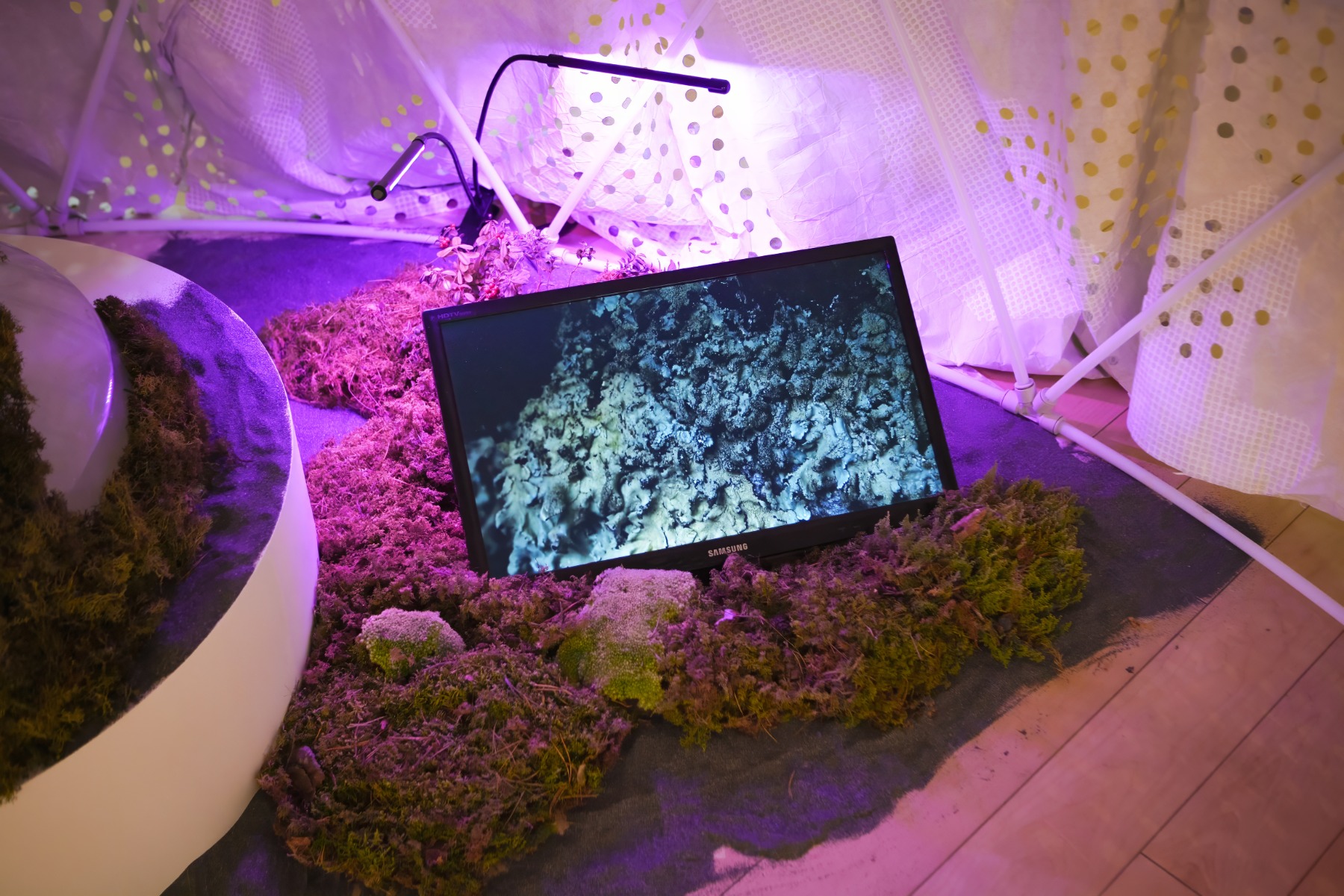
Has this engagement with nonhuman intelligence changed your daily practice? Has it changed the way you approach other species and your environment in your everyday?
Since I’ve started researching living systems – for example, ants, which are trivial insects that you find everywhere, as well as plants – I’ve developed a liking for how simple they are. Learning from biologists about how these systems work and how they could be inspiring for new ways of thinking has opened up my understanding about them...and also made me care more for them. Many people ask how can we be made to care more for other species. Artists have different approaches toward nature and ecology, but what matters is what you do in ‘real’ life – how you care about other species. I think I am learning to respect them and not take them for granted. When you start respecting and admiring other forms of life, your behaviour towards them changes.
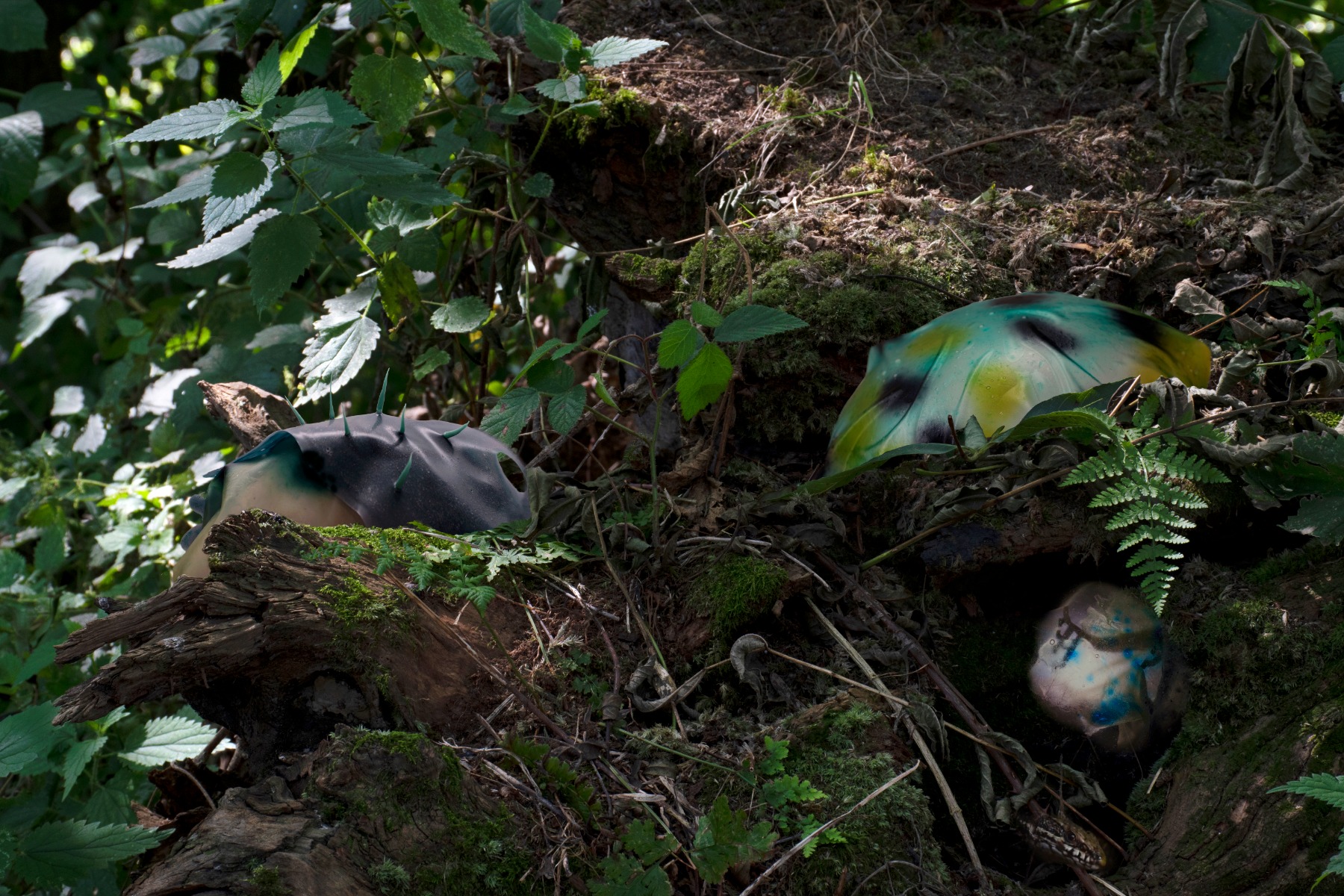
What do you make of the anthropocentric analogies that we tend to make? They might help foster respect and understanding for other species, but at the same time, it once again replicates the hierarchy of otherness – where other species have to be assimilated to how we live/exist to be worthy of our attention.
This is an interesting question because it brings out human ambivalence – to respect other species, we have to somehow project ourselves onto them. I don’t think that’s necessarily a bad thing. I think it’s just something humans do. It is also linked to empathy. To empathise with the other, somehow you have to project yourself onto it. Empathy is activated most easily if you imagine yourself in the situation of the other. I don’t know whether this ability ‘exists’ among plants or ants. There was a recent discussion about ants having empathy as they feed each other (a process called trophallaxis). But that’s, once again, us anthropomorphising the behaviour of other species.
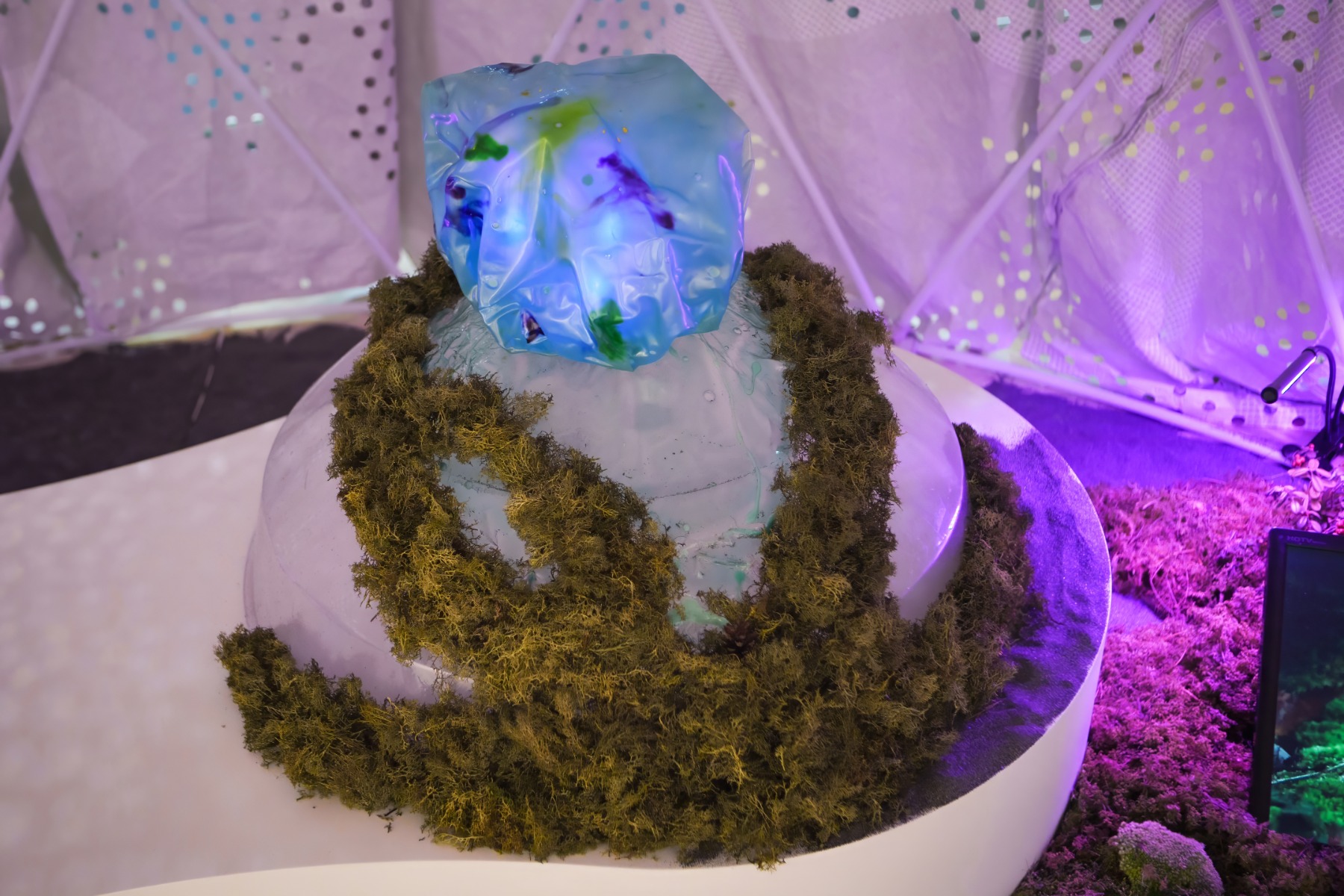
Do you think it’s possible to develop other approaches to building interspecies empathy that wouldn’t be based on anthropomorphising and would give more space for the differences between us?
I definitely think it’s possible, and that it’s even happening. I try to motivate and encourage people to believe that it is necessary to understand the interspecies’ differences in my work. The question has always been how to live together not just with other humans but also the rest of the planet. In the current state of climate and environmental crisis, we really have to tackle this assignment. I believe it is possible if we look at these other modes of existence and try to comprehend and respect them, not just exploit them.
You’ve talked about the colonial approach and the vertical hierarchies that we tend to develop in relation to other species, as well as, historically, within societies. Plants play the role of counterpart in the comparison in terms of exhibiting symbiotic, or at least horizontal, relations. But aren’t there hierarchies within the plant world as well?
This question is also interesting. When speaking about humans, we speak of politics, so it follows to also question the politics (if any) of plants. I want to frame it as symbiosis. I often hear people assuming that symbiosis is a mutual relation in the sense that I give you something and I receive something back. In biological processes, symbiosis means any kind of interaction, even if it’s parasitical. What we understand as a parasite is one thing exploiting another. But it can also refer to relationships in which one life form takes something from the other, but the other does not lose anything through the process. Coming back to the question, hierarchies of plants is, once again, an instance of anthropomorphising by trying to apply social structures to plants. An interesting case is boquila trifoliolata, which imitates the leaves of another, less tasty plant as to prevent animals from eating it. It’s an interesting question – how do they know what to do? You could think that there is a hierarchy here because a plant that imitates another appears to be ‘intellectually’ superior by being ‘smart’ enough to ‘use’ another plant. But that is, again, anthropomorphising the situation. Another example is the acacia tree: it generates a sweet nectar to which, it’s believed, ants become addicted – to the point that the ants will even eat up other insects that threaten the plant. When I first read about this, I thought – well, that is a smart plant that has learned to control the ants in some way. But now I think that perhaps that’s an anthropocentric way of seeing things.
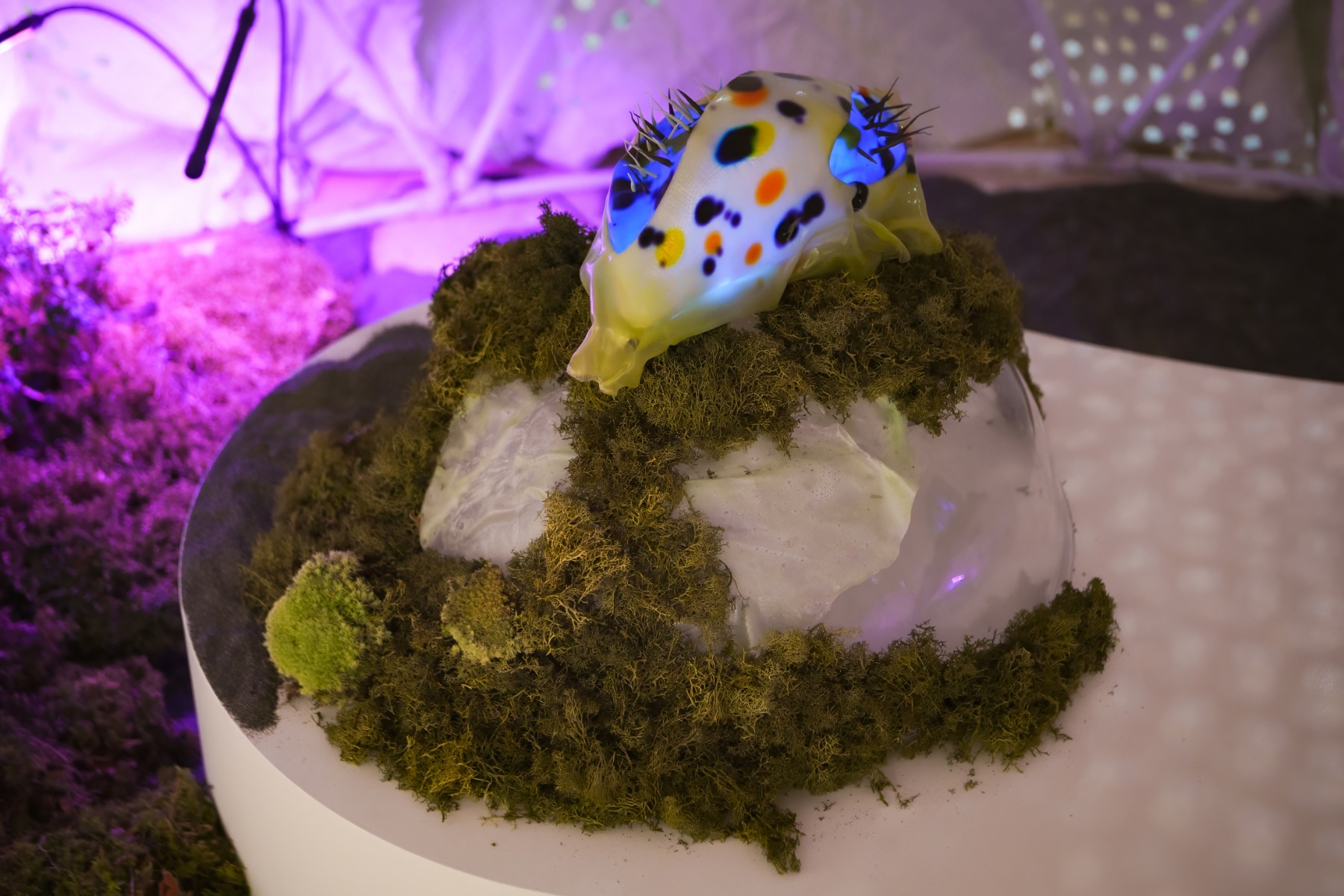
Coming back to Plug-in Habitat...it was inspired by Archigram, a utopian architecture group, right? Could you explain the ‘utopia’ that you imagined with this work?
I’ll say a bit about the residence where I started making this work because I think the context there greatly inspired the work. Namely, I stayed at LABoral, a huge building complex built during Franco’s dictatorship in Spain, and my reflections departed from that architecture. When walking through the space, it’s hard to feel sheltered there because it is so large...the space was meant to impose power. There is a purpose behind the design of any structure made by humans. When I went to do my research in Ladines, which is where the Natural Park of Redes is located, I asked myself: What’s the architecture of a living system? I connected with Archigram’s question of, ‘What would happen if the whole urban environment could be programed and structured for change?’. In nature, we’re constantly exposed to change. We create houses and other structures precisely to resist change. You’re usually surrounded by air conditioners in order to not feel the heat, or heating systems to not feel the cold. It’s all meant to control the environment. This begs the question: How would things be if we were exposed to changing conditions but rooted in place, as plants are? Cushion plants, as one can see in Plug-in Habitat, served as great inspiration for me. They grow in the shape of a ‘cushion’, creating various architectures that allow them to regulate humidity and temperature within a ‘dome’. In essence, they adapt to the change in their own context. Because of this, they can shelter other species and help other plants grow. It’s a quite complex system, but at the same time, it’s just a plant.
Departing from inspirations such as cushion plants, I try to transform theories and ideas into works that somehow embody them and go beyond speculation. I think this is how art can help the most. We can embody things that do not necessarily exist or make sense yet. Archigram developed several speculative architectural projects that were never executed. I wanted to build a system exploring the technological possibilities and biological knowledge of today. You can actually connect a plant to an artificial module/sculpture and make it learn from the plant. This work is currently travelling – I have modules in exhibitions in Riga and Zagreb. I was imagining a system whose limits are not geographical...modules could even be connected between different planets. As long as you have the internet, it’s all possible. So, this was what I had imagined, but I also invited the audience to imagine further possibilities.
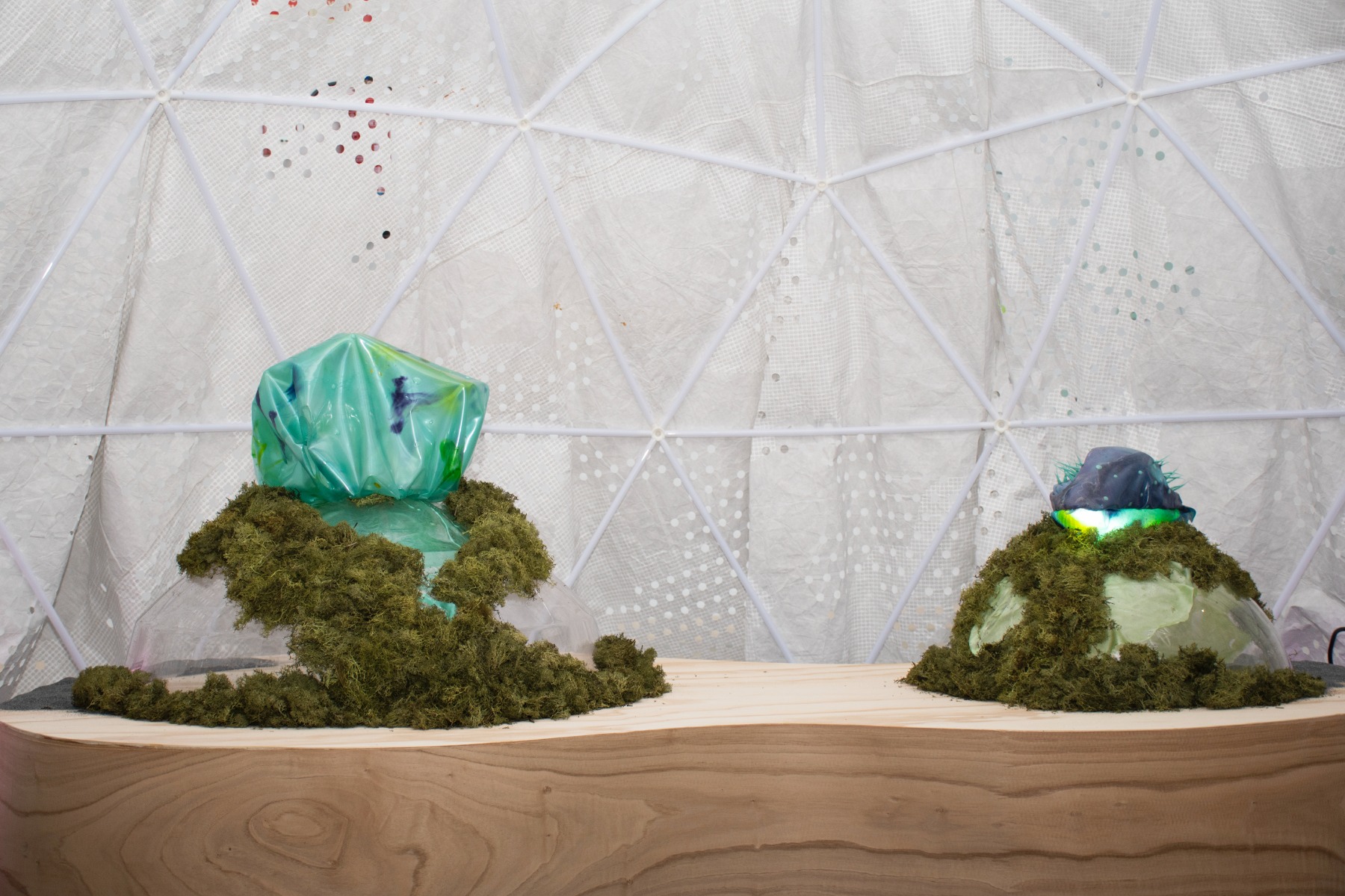
You have, in a sense, given plants the capacity to travel, which, in turn, speaks to the nomadic lifestyles we discussed beforehand. What do you think makes people so resistant to change?
I think it’s based on the idea that humans are in control and that we don’t want to change that. Rationality entails a thinking of cause and effect, and the effect is already in the cause and determined by it. We take for granted that we’re in control while forgetting that there are also side effects...which we are now having to face head-on as ongoing environmental and societal crises get worse and worse. Another factor is that we don’t want to give up our comfort by changing our lifestyles. In order to adapt, one has to change a lot, as well as give up a lot, that our contemporary lifestyle has allowed us. It must be done, however. We’re currently living in a system that is based on consumption and exploitation, and that has to change. But there is resistance to it – we built this ourselves.
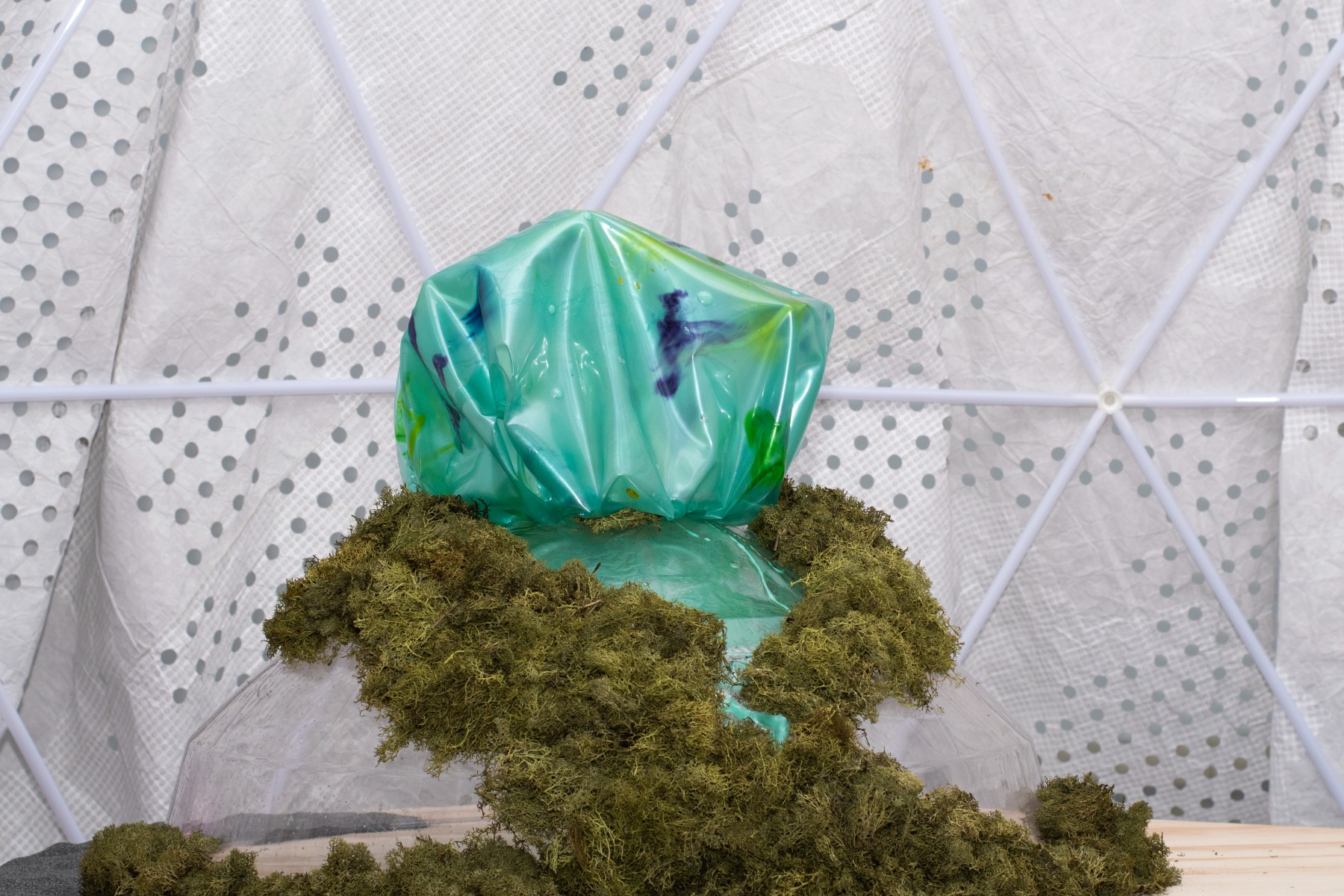
Which social structure would you say is the closest to what you imagined with Plug-in Habitat? Are there even any?
It’s difficult to say how a social structure would be immediately similar to the work. I see sociopolitical dynamics as being cyclic. Democracy is still the least bad among other forms of governance, even if it’s not perfect and has a lot of problems within it. I think Plug-in Habitat proposes a social structure in which we learn from each other – it’s about making room for discussion and finding ways of co-existence.
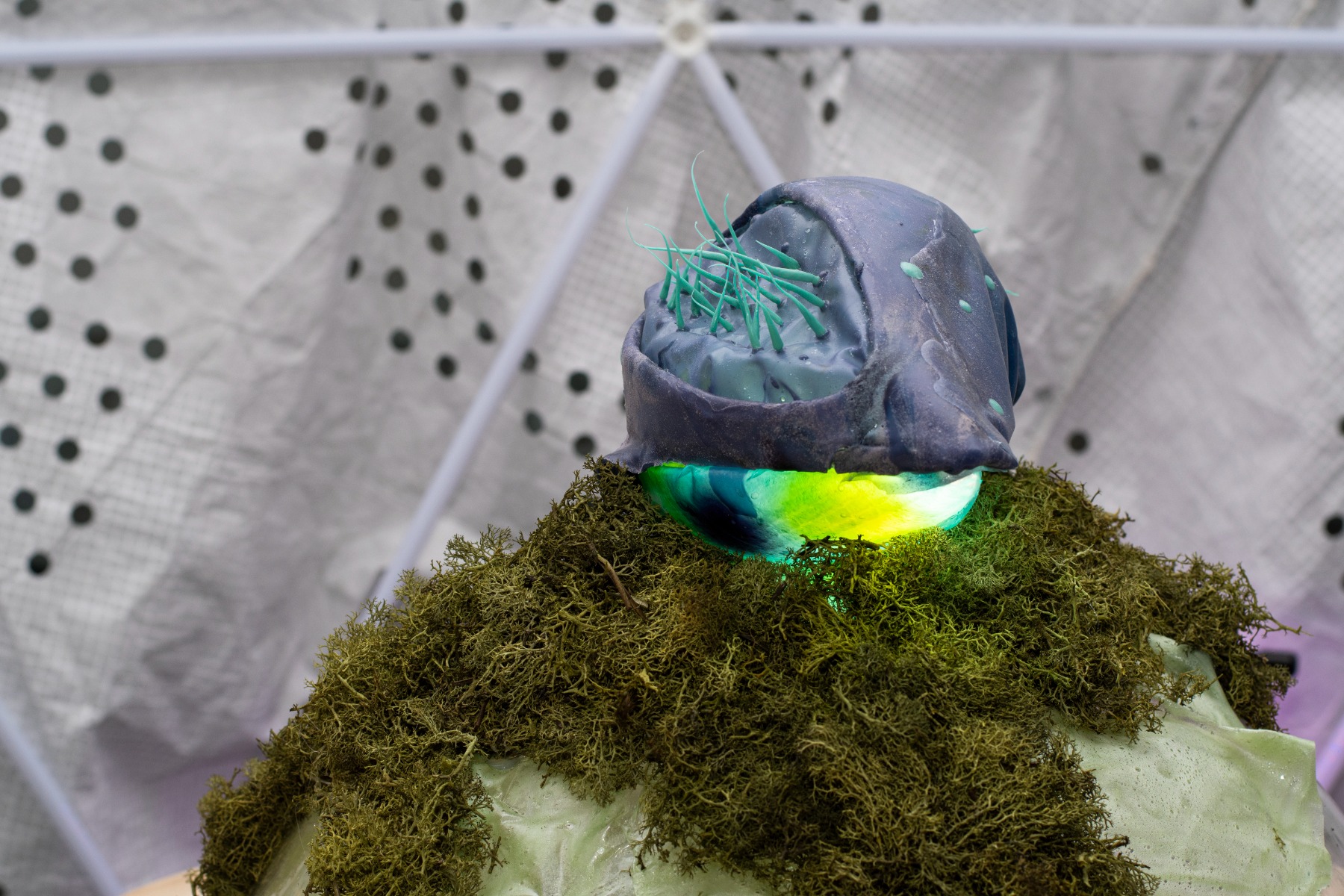
If you believe in cyclic social change, do you think that learning from plants and their ability to adapt could revolutionise this cycle?
That’s a big question. I can only hope. I mean, biomimetics is nothing new. We use ‘life as a model’ to create products for consumption and often don’t even realise that fact when we buy them. But it could also be used to change our way of thinking – to de-centre it from the ‘human’ way of thinking. I can only hope that this will progressively help and bring about change. I think it does already, and that it will continue doing so. Maybe I’m optimistic, but I have to be.
From the standpoint of philosophical anthropology, where would you position the human being in the cosmos?
I think we should be standing off to the side, understanding that we’re neither ‘higher’ nor ‘further’ ahead. We don’t have to be somewhere behind, just on the side – where co-living is possible. This question is usually posed falsely, as if the division between human and nonhuman places us apart from others. But we’re all just different forms of life. That’s the answer to how to respect other living beings. That’s our duty, and to be respectful, we should put ourselves aside and understand that we don’t understand everything.
